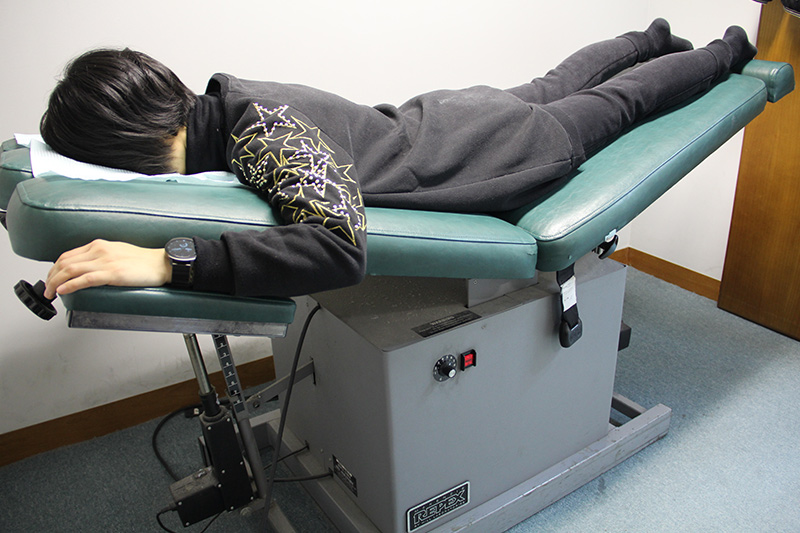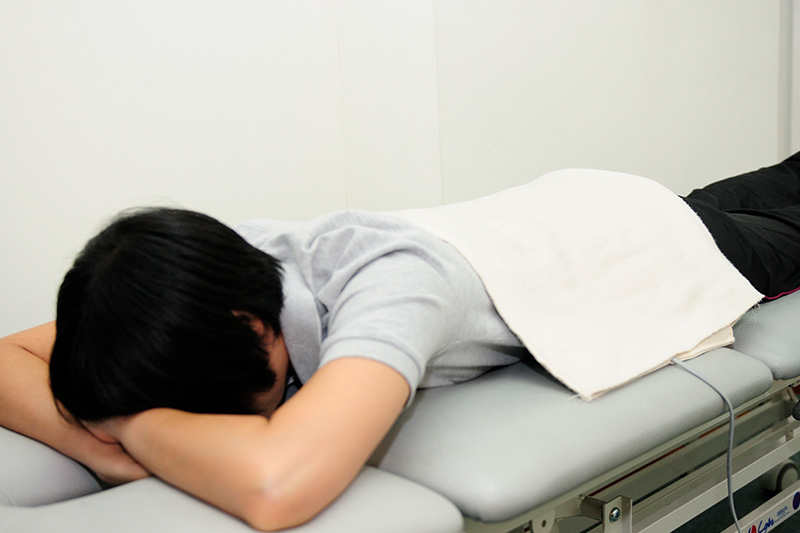Physiotherapy

Physiotherapy
For athletes or those who were injured in a car accident or suffered serious injuries, the need to see a physiotherapist for rehabilitation might sound pretty obvious, but how about the general population? Unlike taking medication, physiotherapy relies on physical means to stimulate the human body's natural healing processes, making it a popular option for patients dealing with muscle and joint problems like pain, muscle weakness as well as wear and tear injuries in joints.
Physiotherapists utilize the following principles in providing assessment and treatment for their patients:
Targeting the symptoms - Quickly minimise discomfort
Targeting the cause - Tackle the underlying causes
Prevention - Reduce the risk of potential re-injury or recurrence of pain
The causes behind each symptom can vary greatly. Physiotherapists will first assess and analyze patients’ condition, and then utilize the most suitable therapy accordingly. In addition, the physiotherapist will also teach home exercises and give lifestyle advice to aid recovery.
Pain Control Techniques
Despite the type of pain you are experiencing, evidence indicated that there always has been an aggravating factor causing it. This can either be movement, or incorrect posture. To counteract, the therapy will illustrate an exercise that opposes the irritating movement, aiming to release pressure in muscles, preferably ease the tension within and achieve long-term comfort.
Alternatively, advice will be given to support your day-to-day usage of body limbs. Examples such as performing muscle retractions to correct postures, self-messaging techniques to remediate pain, or even sleeping postures for comfort deep sleep.
Please consult our therapist for detailed Pain Control Techniques that can be specifically designed with inconsideration of your condition and ability. (Referenced from Hall, Hamilton. “A consultation with the back doctor.”)

Stretching Exercises
Stretching Exercise is the key to improving your prognosis in rehabilitation. Countless of evidence has proven that improving flexibility when injured can help the recovery of soft tissue around the site and restore your baseline functional ability prior to the incident.
By definition, flexibility is the absolute range of motion in joint and the length of muscle across the involved joint. Often post-injury, patient experiences stiffness in joints due prolong inactivity. By performing stretching exercises, stiff joints were able to re-engage in movements and this helps the circulation of blood to the injured site. Consequently, flexibility/stretching exercises help some tight muscles to loosen up, which improves the quality of life as this reduces the occasions for you to experience ‘pins and needles.


Strengthening Exercises
Muscle is involved in all simple tasks such as sitting, and standing; or day-to-day activities such as walking, running, reaching, lifting, or throwing. Difficulties in performing the above-suggested activities indicate a possible weakness in muscles. All in all, muscle strength provides power, endurance, contraction speed, timing, and balance. In simple words, it supports your ability to perform all tasks. It is therefore important to strengthen your muscles so to support you in regaining your baseline mobility. On the contrary, the action of strengthening exercise promotes blood circulation to the active mobilizing parts. This includes the soft tissues, tendons, ligaments, and cartilage. Performing these active mobilization foster the recovery on injured site.
Strengthening tasks will be illustrated by therapy during each session. It is often an easy-performing exercise and patients will able to carry it home and start self-strengthening as tolerated. These include some endurance exercises that can be done in bed, or some strengthening exercises with the resistance of therapy bands, or some movement exercises to increase your range of movement, etc.

Gym Exercises
Gym exercise, is an advanced level of strengthening exercise. This is usually done to further strengthen the patient’s specific muscle weakness from their injury, or to prevent the redundancy of symptoms.
Therapies will first access the patient’s need and tolerance to using the gym. Once acknowledged, a specific therapeutic exercise plan will be demonstrated by the therapy to guide you step-by-step on using the gym. You will be supervised to make sure correct posture was performed throughout the exercise, so as to secure accurate therapy goals and prevent falsity caused by incorrect usage of gym equipment.
To ease your concern, therapy assigns you weight-bearing exercises. However, it will all be based on treatment protocols and progresses in a stepwise manner base on your rehabilitation stage.

REPEX
REPEX is a therapy treatment table created specifically for the management of the mechanical disorder of the lumbar spine. Often those suffering from easily irritable low back pain and/or radiating symptoms can experience pain with even the smallest of active movements of the spine or joint/tissue movements. This pain is caused by the sensitivity of it’s local nervous system because of the mechanical disorder; in most cases, this does not equate to structural or tissue damage. However, this sensitivity can make it difficult for a patient to initiate and tolerate movement-based approaches to treating back pain.
Using REPEX, patients can achieve numerous reps of the desired movement in a relaxed and non-threatening way to the patient’s nervous system. By doing so, the primary goal of stretching to relax muscles was achieved, and no complication of increased pain will be caused.


Acupuncture
Acupuncture is one of the many skills employed within physiotherapy as part of an integrated approach to the management of pain and soft tissue injuries. It can be implemented to relieve pain and promote the healing process.
The insertion of the acupuncture needles stimulate the modification of the tissue around and therefore reduce the overall stiffness in the targeted soft tissue. Moreover, it is purported that acupuncture can trigger the release of certain chemicals in our central nervous system which brings pain relief effects. It is therefore one of the treatment options for patients with various conditions such as back pain, neck pain and osteoarthritis.

Manipulation
Manipulation is a technique used for treating pain conditions and various other musculoskeletal dysfunctions. It is usually performed as a quick and accurate thrust to the target joints, which often accompany with a “pop” sound. Physiotherapists perform this technique to order to reduce pain and improve joint mobility of their patients. This treatment technique maybe indicated in treating back pain and neck pain after physiotherapists’ assessment.

Traction
Traction therapy is a treatment which applies a stretching force longitudinally to our body in order to reduce the pressure on the spine. It could be done manually or mechanically with different parameters such as the amount of loading, on-off period of the traction force and their durations. It is one of the treatment options when it is suspected that the pain is caused by the compression or irritation on the spinal nerves by protruded discs.

Heat therapy and Cold therapy
When heat is applied to our body, the blood vessels of the targeted area will undergo a process called vasodilation and the blood flow to the area will be promoted. Through heat therapy, the metabolic rate of the treatment area will be increased and it therefore promotes the healing process. Also, heat therapy can help to improve the flexibility of various soft tissues, which is beneficial to stiff joints and tightened muscles. It is therefore a commonly implemented treatment in treating a wide range of conditions such muscle spasms, osteoarthritis and back pain.
Cold therapy, or cryotherapy, which involves in the application of an ice pack over an affected area, is usually implemented for treating acute inflammation conditions such as acute ankle sprain or arthritis. Through the application of an ice pad to the treatment region, the area’s local blood flow, nerve conduction speed and metabolic rate are reduced. It can therefore provide effects including pain relief, swelling reduction and local tissues damage prevention.


Ultrasound
Therapeutic ultrasound is a modality which ultrasound waves are transmitted to a localized body region using a transducer in direct contact with the patients’ skin via a gel. It is commonly used for treating various musculoskeletal conditions such as muscle strains, osteoarthritis and ligaments/tendons injuries. It increases local blood flow and accelerates the healing process. Ultrasound therapy can be thermal or non-thermal with different frequencies and it can be used for both acute and chronic conditions.


Shockwave therapy
Extracorporeal Shock Wave Therapy (ESWT) is a medical technology used in many parts of the world, both in disintegrating kidney stones and in treating musculoskeletal injuries.
It utilizes high-energy shock waves, which are transmitted through the skin to underlying tissues. A shock wave is a mechanical wave and not an electric one and there is no rick of electrocution when being used.
The shock waves promote blood circulation and activate self-healing processes. Research has shown that shock waves play a part in formation of new blood vessels, cell regeneration and dissolution of calcium deposits.




Interferential therapy
Interferential therapy (IFT) is an electrophysical therapy which alternating medium-frequency electric current is applied to our body through suction cups or electric pads. It can inhibits the pain signals sending to our brain and thus relieves both acute and chronic pain. It can also stimulate muscle contraction and reduce oedema. The usage of suction cups can also provide the effect of soft tissue massage to the target tissues. IFT can be used to treat conditions such as back or neck pain, tennis elbows and osteoarthritis.

TENS
Transcutaneous Electrical Nerve Stimulation (TENS) is a type of electrophysical therapy which provides pain relieving effect by delivering electrical current to our body. 2 or 4 electric pads are attached to the skin of the treatment area, while electric impulses of various frequency, wavelength and intensity are transmitted to the target regions, which can inhibit pain signals going to our brain and stimulate the production of endorphins to reduce our pain. It can be used to provide modest pain relieving effects to conditions such as tendinitis, osteoarthritis and low back pain.

